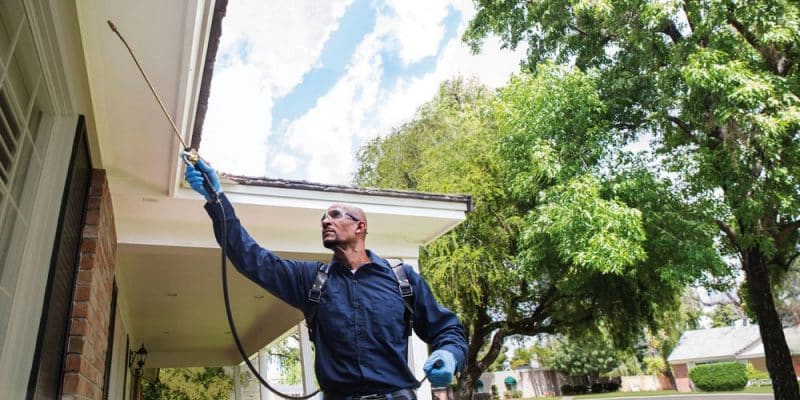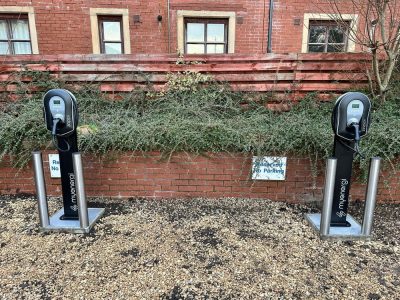
San Antonio is a vibrant city with a unique blend of cultures, history, and a warm climate. However, the same climate that makes San Antonio so appealing also makes it a hotspot for various pests. From ants and cockroaches to termites and rodents, pest control is essential for maintaining a healthy and comfortable living environment. This ultimate guide to pest control in San Antonio will provide you with valuable insights and practical tips to keep your home or business pest-free.
Understanding Common Pests in San Antonio
Before diving into pest control strategies, it’s crucial to understand the common pests that affect San Antonio residents.
Ants
Ants are one of the most common pests in San Antonio, with species such as fire ants, carpenter ants, and pavement ants frequently invading homes and yards. Fire ants are known for their painful stings and aggressive behavior, posing a hazard to people and pets. Carpenter ants can cause structural damage by tunneling through wood, while pavement ants typically nest in cracks in pavement and foundations, becoming a nuisance when they enter homes. To control ants, keep food sealed, seal entry points, and use bait traps to eliminate colonies.
Tips for Control:
- Keep Food Sealed: Store food in airtight containers and clean up spills immediately.
- Seal Entry Points: Close gaps and cracks in doors, windows, and foundations.
- Use Bait Traps: Ant baits can be effective in eliminating colonies.
Cockroaches
Cockroaches thrive in warm, humid environments, making San Antonio an ideal location for them. These resilient pests are not only unsightly but also pose significant health risks. They can spread diseases by contaminating food and surfaces with bacteria and pathogens they pick up from unsanitary places. Cockroaches are known to trigger allergies and asthma, especially in children, due to the allergens they produce through their droppings, saliva, and shed skin. Their ability to hide in small cracks and crevices makes them difficult to eliminate, and they often come out at night in search of food and water. Effective cockroach control involves maintaining cleanliness, sealing entry points, and using insecticides or professional pest control services to manage infestations.
Tips for Control:
- Maintain Cleanliness: Regularly clean kitchens and bathrooms to remove food and water sources.
- Seal Cracks: Close entry points to prevent cockroach entry.
- Use Insecticides: Apply insecticides in areas where cockroaches are commonly found.
Termites
Termites are a significant concern in San Antonio due to the extensive damage they can cause to wooden structures. These pests feed on cellulose found in wood, paper, and other organic materials, leading to severe structural damage if left unchecked. Termite infestations often go unnoticed until significant damage has already occurred, as they typically work from the inside out, hollowing out wooden beams, floors, and walls. The humid climate of San Antonio provides an ideal environment for termites to thrive, particularly subterranean termites, which build large colonies underground and access homes through mud tubes.
Tips for Control:
- Regular Inspections: Schedule annual termite inspections with a professional.
- Reduce Moisture: Fix leaks and ensure proper drainage around your property.
- Bait Stations: Install termite bait stations around your home.
Rodents
Rodents, such as rats and mice, can cause extensive damage to homes and pose serious health risks. These pests are known for gnawing on wires, insulation, and wooden structures, leading to potential fire hazards and costly repairs. In addition to structural damage, rodents can contaminate food and surfaces with their droppings, urine, and saliva, which can spread diseases such as hantavirus, salmonella, and leptospirosis. Their presence can also trigger allergies and asthma in sensitive individuals. Rodents reproduce quickly, making early detection and prompt action crucial.
Tips for Control:
- Seal Entry Points: Close holes and gaps in walls, roofs, and foundations.
- Remove Food Sources: Keep food stored securely and dispose of garbage regularly.
- Use Traps: Set traps in areas where rodents are active.
Preventative Measures
Effective pest control in San Antonio involves proactive measures to prevent infestations before they occur.
Maintain Cleanliness
A clean home is less attractive to pests. Regularly vacuum, mop, and wipe down surfaces to eliminate food and water sources. Pay special attention to kitchen counters, floors, and dining areas where crumbs and spills are common. Don’t forget to clean behind appliances and in hard-to-reach corners where pests often hide. Keeping your home clutter-free also reduces hiding spots for pests, making it easier to spot and address potential infestations.
Proper Waste Management
Dispose of garbage regularly and keep trash bins sealed. This helps to minimize attractants for pests. Ensure that outdoor trash bins are placed away from the house to prevent pests from entering your home. Use trash bags that are resistant to tearing and always tie them securely. Regularly clean trash bins to eliminate odors and residue that can attract pests.
Landscaping Practices
Trim bushes, trees, and grass regularly to reduce hiding spots for pests. Keep mulch and firewood away from the foundation of your home. Consider using gravel or stone near your home’s foundation instead of mulch, as it is less attractive to pests. Ensure that tree branches and shrubs do not touch the exterior walls or roof, providing a bridge for pests to enter your home. Regularly inspect and clean gutters to prevent water accumulation, which can attract pests like mosquitoes and rodents.
Home Maintenance
Inspect and repair any structural damage that could provide entry points for pests. Ensure that windows and doors fit tightly and that there are no gaps in the exterior walls. Regularly check for cracks in the foundation, loose siding, and gaps around utility lines entering the home. Use weather stripping and door sweeps to seal any gaps under doors. Additionally, maintain the integrity of your roof by inspecting for missing shingles or damaged flashing that could allow pests to enter.
Professional Pest Control Services
While DIY methods can be effective for minor infestations, professional pest control services offer comprehensive solutions for persistent or severe pest problems.
Choosing a Pest Control Company
When selecting a pest control company in San Antonio, it’s important to make an informed choice to ensure effective and safe pest management. Consider the following factors:
Reputation: Look for companies with positive reviews and a good reputation in the community. Check online reviews, ask for recommendations from friends and family, and consult local business directories. A company with a strong reputation is likely to provide reliable and satisfactory service.
Experience: Choose a company with experience in dealing with the specific pests common in San Antonio. Experienced professionals will have a deeper understanding of local pest behaviors and the most effective methods for controlling them. Inquire about their track record with similar pest issues to ensure they are well-equipped to handle your situation.
Licensed and Insured: Ensure the company is licensed and insured for your protection. A licensed company meets the regulatory requirements and standards for pest control, while insurance protects you from any potential liabilities during the treatment process. Always verify their credentials before proceeding with their services.
Eco-Friendly Options: Inquire about eco-friendly pest control methods if you are concerned about the environment. Many companies now offer green pest control solutions that minimize the use of harmful chemicals and focus on sustainable practices. These options can be effective while being safer for your family, pets, and the environment.
Taking the time to research and choose a reputable, experienced, and eco-conscious pest control company will help ensure that your pest issues are resolved efficiently and responsibly.
What to Expect from Professional Services
Professional pest control services offer comprehensive solutions to manage and eliminate pest infestations. Here’s what you can typically expect:
Inspection: A thorough inspection to identify the type and extent of the infestation. Pest control professionals will examine your property, including hard-to-reach areas, to pinpoint pest entry points and nesting sites. They will also assess any potential factors contributing to the infestation, such as moisture levels or structural damage.
Treatment Plan: A customized treatment plan tailored to your specific pest problem. Based on the inspection findings, the pest control experts will develop a strategy that addresses the particular pests affecting your property. This plan may include a combination of chemical treatments, bait stations, traps, and non-chemical methods. The plan will also outline preventative measures to minimize the risk of future infestations.
Follow-Up: Regular follow-up visits to ensure the effectiveness of the treatment and to prevent future infestations. These follow-ups allow professionals to monitor the situation, adjust treatments as needed, and provide ongoing support. Regular monitoring helps catch any new pest activity early, ensuring your home remains pest-free over the long term.
In addition to these core services, professional pest control providers often offer advice on how to maintain a pest-free environment through proper sanitation, home maintenance, and preventative measures.
Seasonal Pest Control Tips
Different pests are active during different times of the year. Here are some seasonal tips to keep in mind:
Spring
- Ants and Termites: Conduct a thorough inspection for ants and termites as they become more active.
- Mosquitoes: Remove standing water to prevent mosquito breeding.
Summer
- Cockroaches and Rodents: Keep your home cool and dry to deter cockroaches and rodents seeking refuge from the heat.
- Spiders: Regularly clean webs and reduce clutter to discourage spiders.
Fall
- Rodents: Inspect and seal entry points to prevent rodents from entering as they seek warmth.
- Ants: Continue using ant baits to control any lingering colonies.
Winter
- Rodents: Monitor for signs of rodent activity and set traps if needed.
- General Pests: Maintain cleanliness and proper storage to avoid attracting pests seeking shelter.
Final Words
Effective pest control in San Antonio requires a combination of preventative measures, regular maintenance, and professional services when needed. By understanding the common pests in the area and implementing proactive strategies, you can protect your home or business from unwanted invaders. Remember, a pest-free environment contributes significantly to the comfort and health of your living or working space.
By following this ultimate guide to pest control in San Antonio, you can ensure that your property remains pest-free and your living conditions remain optimal. Regular inspections, cleanliness, and professional help when necessary will keep the pests at bay, allowing you to enjoy everything San Antonio has to offer without the worry of pest problems.









